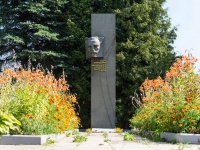Belarusian Stage at the Turn of the Century
At the beginning of the 20th century, Belarusian dances, plays, songs, and poems triumphantly resounded on the theatrical stages of Minsk, Vilnius, Saint Petersburg, and Warsaw. This success was made possible thanks to the talent and dedication of the first national actor and director, Ignat Buinitsky. He lived for the theater and even passed away during a rehearsal.
From Nobleman to Theater Founder
Ignat Buinitsky was born on August 22, 1861, in the family estate of Polevachi. Being a nobleman of the “Swan” coat of arms, he chose the path of art. After graduating from the Riga School of Surveying and private acting courses in Vilnius, he worked in his profession while traveling around Belarus. During these journeys, Buinitsky recorded folk songs, studied ornaments, and learned traditional dances.
Leaving his surveying job, he returned to Polevachi, where in 1907 he founded the first Belarusian amateur theater troupe. It included his three daughters and close friends. Initially, performances were held at the estate and nearby villages, but soon the troupe set out on tour.
The First Triumph of Belarusian Theater
Buinitsky's performances began to attract attention. In 1910, the legendary "First Belarusian Evening" took place in Vilnius, where the audience welcomed the artists with ovations. Dances, songs, and plays in their native language captivated the public. According to eyewitnesses, the hall gave a standing ovation, especially after the performance of the song based on Yanka Kupala’s poem: "Who is marching in that vast crowd? — Belarusians!"
Excursions across Belarus offer visitors a chance to explore places connected with the history of the national theater. For example, Minsk, Vilnius, and Saint Petersburg are cities where Buinitsky's troupe performed with great success.
A Theater Ahead of Its Time
The tours continued, with performances in Minsk, Saint Petersburg, and Warsaw. The repertoire consisted of three parts: a play, a musical program, and a dance section. Buinitsky, a tall, dark-haired man with a luxurious mustache, became so popular that his portraits were printed on postcards.
However, in 1913, the theater had to close. To fund the tours and support the troupe, Buinitsky sold almost all his possessions. Soon after, World War I began, and he was mobilized. Despite serving in the army, he continued to organize performances. In 1917, he founded the First Society of Belarusian Drama and Comedy in Minsk, the predecessor of the National Academic Theater named after Yanka Kupala.
The Last Dance
That same year, in 1917, Ignat Buinitsky passed away during a dance rehearsal in the village of Polochany near Maladzyechna. His famous phrase, "I will die from dancing," turned out to be prophetic.
Remembering the Founder of Belarusian Theater
Initially buried in Poločany, his remains were later reburied in Polevachi by his daughters in 1918. Over time, the grave was nearly forgotten, but in 1976, thanks to the efforts of writer Vladimir Karatkevich and theater scholar Vitaly Nefed, his remains were moved to Prozorki.
Today, a monument by sculptor Ivan Misko stands over his grave. Tourists booking excursions across Belarus can visit this historic site, as many excursion routes through Prozorki include a stop at the grave of the national theater’s founder.

